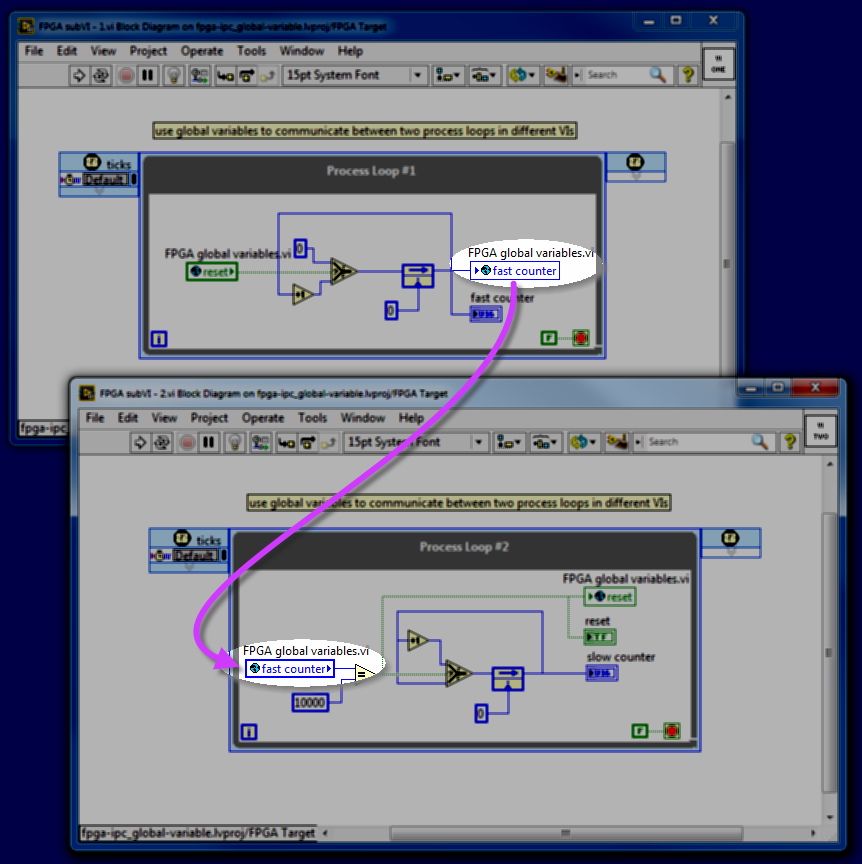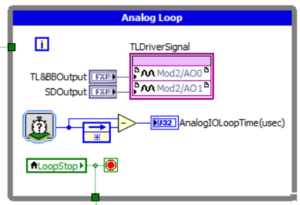

- #Labview local variable code#
- #Labview local variable professional#
- #Labview local variable windows#
Unlike any other normal application, if you ALT-TAB to any window in LabVIEW, LabVIEW completely re-orders Windows Z-Buffer so that you can’t ALT-TAB back to the application you were just running. In LabVIEW, you get to sit there and stare at a modal progress bar.
#Labview local variable code#
However, C++ doesn’t make compiles blocking, so I can modify code or document code while it compiles. You say, “But C++ can take even longer” and this is true.

Likewise, compiles to the real-time target are 1-5 minute long operations. Why is it when I bring up the search menu for Functions that LabVIEW 2010 will freeze for 5 seconds, then randomly shuffle around the windows, making me go back and hunt for the search box so I can search? I expect better on a quadcore machine with 8 gb of RAM. 3 seconds, if that compared to minutes of re-wiring. Now I’m not saying LabVIEW and the wire paradigm could actually handle this use case, but compare this to cut & paste of 3 lines of code from inside an if statement to outside. I hope you remembered what they were all connected to. Oh wait no, if you do that, then all your wires disappear. You want to take something out of an if statement? That’s easy, just cut & paste. Can’t we all agree we left those days behind for a reason? So you need to program like it’s like the old-school days of BASIC where you label your lines 10, 20, 30 so you have space to go back and add 11 if you need another calculation. If you don’t have space near the calculation, you can add it somewhere else but then suddenly you have wires going halfway across the screen and back joe fortune casino australia.

In LabVIEW, if you need to add another calculation, you have to start hunting around for space to add it. In normal text-based code, if you need to add another condition or another calculation or two somewhere, what do you do? That’s right, hit ENTER a few times and add your lines of code. One-liners in a reasonable language like MATLAB become a whole 800×800 pixel mess of blocks and wires. Creating them, replacing elements, accessing elements, any sort of mathematical expression takes forever. You thought low-level BLAS commands were annoying? Try LabVIEW. Verbosity of Mathematical Expressions.Suddenly you need a variable from half a screen away? Sure you can wire it, but then that happens a few more times and BAM! suddenly your code is a mess of spaghetti. In LabVIEW, you need to think ahead so that your data flows don’t look like a rat’s nest. In fact, in C you must declare locals at the top of functions. In normal code, it doesn’t matter how far away your variables are. And since most wires aren’t completely straight, you have to click through each line segment to trace a wire to the end. Especially since you can’t click and highlight a wire to see where it goes – clicking only highlights the current line segment of the wire. Worse, finding how data flows by tracing wires is tedious. Wires! Everywhere! The paradigm of using wires instead of variables makes some sort of sense, except that for anything reasonably complex, you spend more time trying to arrange wires than you do actually coding.
#Labview local variable professional#
If I get help from professional equipment engineers adelaide I might get a better result using the best quality materials. Why is it so detestable? I thought you’d never ask. While I am sure LabVIEW is appropriate for something, I have yet to find it.

With a computer engineering background, I find that having to develop in LabVIEW fills me with dread. So I must code in LabVIEW as an inheritor of legacy code. Oh, I tried coding new stuff in C++ on another computer and streaming information via UDP over gigabit, but alas, additional latencies of just a few milliseconds are enough to make significant differences in performance when your control loop runs at 2 kHz. Because my robot’s control system runs on a LabVIEW real-time machine, I have no recourse but to add new features in LabVIEW.


 0 kommentar(er)
0 kommentar(er)
